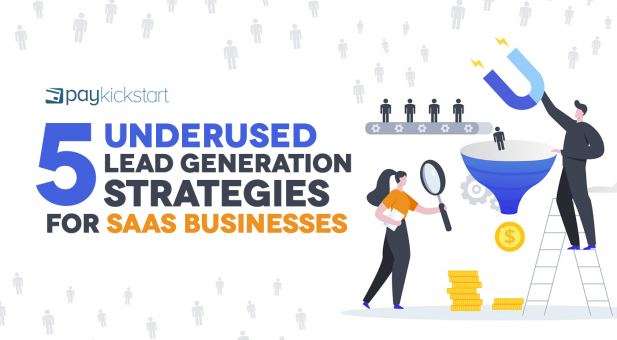Subscription growth hack (by PayKickstart)
Facebook Group - 3,932 members
Visit Group
Let’s face it, marketing in this day and age is tough.
Especially when the attention span of your customers is constantly being pulled at from every direction.
And you’re probably thinking, “Where does my SaaS company fit into all of this? Will I be able to reach my ideal customers? Will they even care?”.
Being that you own a SaaS company, or work for one, you’ve probably already searched information online on how to take your software business to the next level, but are inundated with the same old cliches.
Don’t get me wrong, you should consider these pieces of advice, ie: Offer a free trial, do a drip sequence, focus on ways to increase monthly recurring revenue etc…
Many blogs and experts give this advice because it works, so make sure you do it.
But if you are already doing these things, or you have a start-up, it doesn’t hurt to have other options in your tool belt. And it’s even better when they are free or relatively inexpensive!
I’ve read many articles on lead generation strategies, and took tabs on what was commonly mentioned.
In this article, I’m going to go over five methods that are rarely talked about, and are likely underused, that can generate leads for your SaaS in addition to the commonly used methods.
This method is pretty straight forward, however there are some things to consider to make it worth your time. Neil Patel talks about a similar method where you can go onto blog posts of other companies and answer questions people have, while also linking back to your content if you are allowed to.
You should follow his method too, but what I am suggesting is also using Q&A websites or forums.
When you go onto these websites, it is important to give value upfront, and not blatantly promote. For example, search up SaaS or a related question, and look at the questions people are asking.
When responding and giving input, give a detailed response backed by research, data and personal experience with your company. You can imagine it as a high quality blog post, that people can reference in relation to the problem they are having.
The difference with this situation though, is that you are posting your article on a website that takes care of the traffic for you. For example on Quora and Reddit, posts can get upvotes, and the more upvotes, the more views.
The key to this method is…
To take this a step further, search for a problem that people are having in relation to your service. If you offer a site building software, target wannabe bloggers and entrepreneurs who don’t want to learn code, but just want to get a professional website up and running.
Examples of questions for this topic could be:
Here are several question and answer websites:
This method can be tricky, but it is a guerilla marketing tactic that can get you results that many don’t seem to do. It’s a relatively straightforward method:
There will likely be many instances where the reviews are anonymous or make it hard to identify the person, but for the ones that give clues, follow through with those. G2, Capterra, Softwareadvice, and Trustpilot are some that come to mind, but there are definitely more; I personally found G2 is easier, because they give you a contact request option for many of the reviewers.
Some review sites:
For the other sites, you may have to do name and title searches, and find their LinkedIn or social media profiles. The best thing to do is cast a wide net, so make sure you collect as many names and links as possible, and then try to contact them one by one; I suggest reading this awesome Proprofs article about handling difficult customers, as a reference for how you should speak to them!
Bottom line, focus on the ones who respond, offer them a free trial, or at least go more in depth with their concerns so you can tailor your pitch more effectively for your SaaS. This method is especially good for new SaaS companies, as you may not be getting much organic traffic, and have a big enough budget for ads yet.
For this strategy, you can use LinkedIn or just search businesses related to your industry.
It is similar to strategy 2, but in this case, you are going to get in contact with potential customers of your product, and more importantly, the key decision makers.
This method will have challenges, such as getting your connection requests accepted, figuring out who’s who, and getting a conversation started. The key again is casting a wide net by contacting a large set of targeted people.

Here are the steps:
There are 5 key decision makers
Keep in mind, if it is a large scale company, 100 plus employees, you will want to contact the marketing manager, or someone in leadership who could use your software. If it is a small company, a start up (10 or less), you can contact the owner as it is a smaller operation.
Don’t be ashamed to reach out and cold-pitch, but make sure it addresses them by their first name, has personalized information, and doesn’t appear to be copy pasted. Ideally, take the time to write each, and don’t copy-paste at all.
Every SaaS business understands the value of an email list, but you also have to keep in mind that your Value exchange, Deliverability, Open rate, and Clickthrough rate matters a great deal.
The typical email response rate in software and business is 20%, with a typical clickthrough rate of 7.18% – 8.01% between the two. So what is something you can do to stand out, and potentially increase your lead generation?

On the Amy Porterfield podcast, Episode 321, Neil Patel explained that an untapped strategy is offering a free tool. This could be a profitability calculator, an interactive questionnaire, a spreadsheet or something else that you would find can be useful for your audience.
And the reality is most businesses do the same thing: Offer a free trial, ask to collect an email with a bait, but you have to get creative as with so many doing the same technique, it can lose some of its effectiveness. This is why I suggest standing out, and going the extra mile to offer a tool that can give them immediate value.
For example if you have a marketing analytics tool, you can offer a free profitability calculator, where your customer has to input their own numbers.
The tool will have your logo, and have extra features that won’t work unless they subscribe to your main software, or maybe, they click on the feature and you say that this option is only available in the main software.
This is a method that is not mentioned often, and is likely underused as well. It is very common for SaaS companies to attend seminars and large scale meet-ups, but why not hold a smaller one in your city, or even online through video chat?
In reality this is a networking event, but it can be more personalized as there are less people who will attend, giving you more time to get to know one another.
A simple way to do this is to hold a meet up at a coffee shop and do a meet and greet (after the pandemic of course), or message SaaS owners and invite them to an online meet-up.
The key to this method is to bring SaaS owners and employees together, in both related and different industries.

Sure you can send emails and connect on social media, but the fundamentals of human nature still haven’t changed; human beings are still more receptive to in-person connection. When you meet these people, you can form coalitions that can have inside knowledge, strategies, and a team of like minded people who will help each other.
Whether we like to admit it or not, success is not attained by hard work alone; there are many people in this world who work very hard, and do not move forward financially. It is reached by a good strategy, a strong work ethic, luck, and connections to the right people who can open doors for you.
And you never know, you could meet someone who could teach you something you didn’t know about the industry, connect you with key players, and even do a co-marketing strategy with you that can take your software business to the next level.
These are five methods that i’ve noticed aren’t mentioned very often on blog posts, articles, and are likely underused within the SaaS industry and even business in general. An important point to realize is that you need to stand out from the crowd, but also use methods that are tried and tested to work in SaaS lead generation: Optin form, Free trial, freemium, co marketing etc…
These strategies mentioned above should be used in addition to the strategies you are using, and tested according to your business to see what results they can bring you.
Get testing and here’s to your SaaS success!
Hi, my name is Ryan from Higherdesirecopywriter.com! I write effective content and copy for B2B SaaS companies. I do blog posts/articles, website copy, and make engaging content for readers that truly draws them into your software and company. SaaS, eCommerce, CRO, and inbound marketing are my passions!
Read More About Ryan Desantis